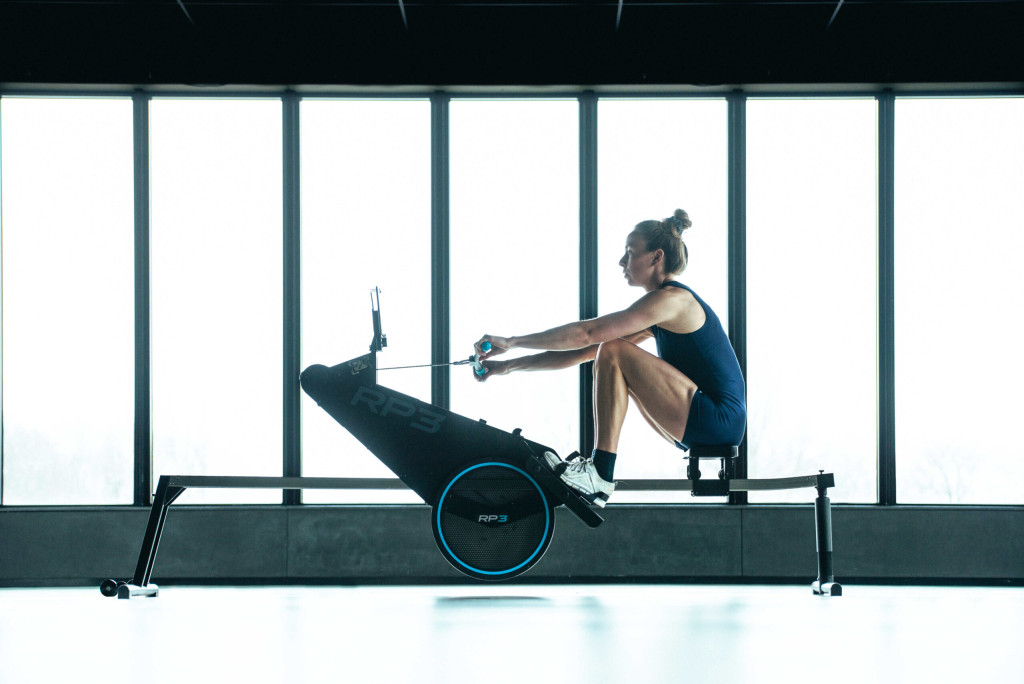Best low-impact cardio options for home
Discover 5 effective low-impact cardio options for home workouts that protect your joints while boosting fitness. Transform your health journey with these sustainable exercises for
If you’re looking for ways to develop real strength without accessing a gym full of weights, bodyweight cardio might be your answer. This approach combines cardiovascular conditioning with resistance training principles to build functional strength that serves you in daily life. Let’s explore how you can transform your cardio routine into a strength-building powerhouse.
Contrary to popular belief, certain types of cardio training can significantly increase muscle strength and power, not just improve endurance. When your body faces resistance—whether from weights or your own bodyweight—muscle fibres adapt by becoming stronger and more efficient. During sustained cardio sessions with proper resistance elements, your muscles experience mechanical tension, which is a primary driver of strength development.
The key lies in understanding that strength isn’t just about lifting heavy objects once or twice. True functional strength involves sustaining force production over time—exactly what properly structured cardio workouts demand. When you perform movements that require your muscles to work against resistance repeatedly, you develop both muscular endurance and strength simultaneously.
Additionally, many cardio exercises engage multiple muscle groups at once, creating compound movements that stimulate more muscle fibres than isolated strength exercises. This comprehensive approach leads to balanced, functional strength gains that transfer effectively to everyday activities.
Bodyweight resistance creates progressive overload—the fundamental principle behind all strength gains—when properly applied. The effectiveness comes from several important factors working together:
When performed with proper form, bodyweight cardio exercises often activate more muscle groups than traditional strength training. For example, a properly executed burpee engages your legs, core, chest, shoulders, and arms in a coordinated effort that builds integrated strength throughout the kinetic chain.
These seven exercises create an effective strength-building cardio circuit that targets all major muscle groups while elevating your heart rate:
For each exercise, focus on maintaining proper form throughout. Start with 30-40 seconds of work followed by 20 seconds of rest, and perform 2-3 rounds of the circuit.
Rowing stands apart in the fitness world by engaging approximately 86% of your muscles in a single, coordinated movement. This full-body engagement creates exceptional strength-building potential through the perfect balance of resistance and endurance work.
The rowing stroke’s push-pull mechanics simultaneously develop strength in the legs, back, and core in ways few other exercises can match. During the drive phase, you’re essentially performing a leg press, back row, and core stabilisation exercise all at once. This compound movement pattern creates significant neuromuscular coordination that translates to improved functional strength.
What makes rowing particularly effective for strength development is the adjustable resistance that allows for progressive overload—the cornerstone of strength building. By increasing resistance while maintaining proper technique, you create the necessary stimulus for muscle adaptation and strength gains.
The beauty of rowing lies in its low-impact nature combined with high resistance potential, making it an ideal strength-building option for people concerned about joint health or recovering from injuries.
To develop strength through cardio effectively, you need a structured plan that progressively increases in intensity. Here’s a step-by-step approach:
| Phase | Duration | Focus | Structure |
|---|---|---|---|
| Foundation | 2-3 weeks | Form and endurance | 20-30 min steady state, 18-20 SPM, 40-50% effort |
| Development | 3-4 weeks | Work capacity | 30-45 min with 2-3×5 min intervals at 60-70% effort |
| Intensification | 2-3 weeks | Power output | Pyramid intervals (e.g., 3-2-1-2-3 min) with increasing intensity |
| Peak | 1-2 weeks | Maximum strength-cardio | HIIT: 5-10×40 sec work/20 sec rest at 80-90% effort |
For optimal results, incorporate these key principles:
Remember to consult with your doctor before starting any new exercise programme, especially if you have existing health conditions or concerns.
Strength gains from bodyweight cardio can stall without strategic variation. Overcoming these challenges requires effective techniques to prevent plateaus:
Tempo manipulation is perhaps the most overlooked variable in bodyweight training. By slowing down the eccentric (lowering) phase of movements, you significantly increase time under tension, which drives new adaptations in muscle strength and endurance. Try performing the lowering portion of exercises over 3-5 seconds.
Adding isometric holds at challenging points in the range of motion creates intense muscular demand without additional equipment. For example, hold the bottom of a squat or the midpoint of a push-up for 3-5 seconds before completing the movement.
Changing body positions slightly can dramatically alter resistance. Elevating your feet during push-ups or widening your stance during squats creates new challenges for your muscles to overcome.
Progressive overload principles apply to bodyweight movements just as they do to weighted exercises. This means systematically increasing reps, sets, time under tension, or movement complexity to continue stimulating adaptation.
Introducing controlled instability through single-leg or single-arm variations of exercises recruits additional stabilising muscles and increases the neurological demand of movements.
When you’re not tracking progress with increasing weight loads, you need alternative methods to measure strength improvements. These practical approaches will help you quantify your progress:
Endurance metrics provide clear indicators of improved strength. Track how many repetitions of an exercise you can perform with perfect form before failure, or how long you can maintain challenging positions like planks or wall sits. Consistent improvements in these numbers reflect real strength gains.
Form improvements often signal developing strength. For example, being able to perform push-ups with proper depth and body alignment, or mastering more difficult variations of exercises indicates significant strength development.
Functional fitness assessments measure real-world strength applications. Track improvements in activities like climbing stairs without fatigue, carrying heavy shopping bags with ease, or lifting and moving household objects. These practical measures often matter more than abstract numbers.
The rowing machine offers particularly useful metrics for strength assessment. Monitor improvements in your power output per stroke and total power sustained over time. These measurements directly reflect your body’s ability to generate and maintain force—the definition of strength.
At RP3 Rowing, we’ve designed our dynamic indoor rowing machines to provide precise feedback on your performance, helping you track these important strength metrics with each session. Our machines create a unique approach to indoor rowing with a realistic experience that builds functional strength efficiently while protecting your joints from excessive impact.
Remember that real strength shows in consistent performance over time, not just in occasional peak efforts. By following the principles outlined in this guide and tracking your progress meaningfully, you’ll develop substantial strength through bodyweight cardio that serves you in rowing and everyday life.
If you’re interested in learning more about the science of rowing and its benefits, reach out to our team of experts today.
Discover 5 effective low-impact cardio options for home workouts that protect your joints while boosting fitness. Transform your health journey with these sustainable exercises for
Discover 5 effective low-impact exercises that protect your back while maintaining fitness intensity. Learn proper form techniques to strengthen your spine without risking injury.
Discover 5 effective home workouts that build strength without stressing your joints. Learn fluid movement techniques for pain-free exercise that delivers results while protecting your
Discover effective low-impact fitness strategies that build strength and cardio health without damaging your joints. Learn sustainable workout techniques for long-term health and injury prevention.
Discover 5 effective full-body low-impact workouts perfect for beginners that protect your joints while building strength and fitness. Start your sustainable exercise journey today!
Discover how low-impact fitness creates sustainable health benefits without joint pain. Learn 5 full-body workouts that deliver results while preserving your body for decades of
Discover why low-impact workouts deliver powerful fitness results without joint damage. Learn 6 key benefits and find the perfect exercise for sustainable daily fitness that
Discover why low-impact training on recovery days accelerates muscle repair, prevents injuries, and boosts long-term fitness gains. Learn optimal activities and avoid common recovery mistakes.
Discover why rowing machines deliver a complete workout while protecting your joints. Engage 85% of your muscles with zero impact stress—perfect for fitness enthusiasts of
Discover effective low-impact exercises perfect for returning to fitness after breaks or injuries. Learn 5 joint-friendly workouts that rebuild strength while preventing setbacks on your
Discover 5 low-impact routines that challenge your entire body without stressing your joints. Build strength and burn calories while protecting your knees, hips, and spine.
Discover how rowing uniquely engages 85% of your muscles while enhancing flexibility in one efficient workout. Build strength and mobility simultaneously without stressing your joints.
Discover how consistent low-impact activity delivers powerful physical and mental benefits without joint stress. Build fitness, reduce stress, and improve mobility through sustainable daily movement
Discover why rowing machines offer the ultimate low-impact, full-body workout for home fitness. Get 85% muscle engagement with minimal joint stress—perfect for all ages and
Discover how low-impact exercise protects your joints while delivering powerful fitness results. Learn 5 joint-friendly workouts that maintain mobility and prevent pain as you age.
Discover how to build sustainable low-impact fitness habits that protect your joints while delivering exceptional results. Learn proven strategies for lifelong exercise consistency without pain.

We will send you a personal quote as soon as possible.
As soon as the quote is ready, you will receive a link by email to order directly.
